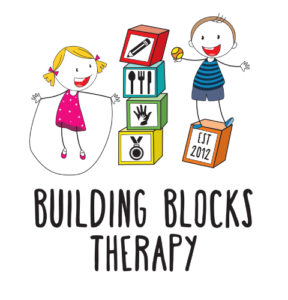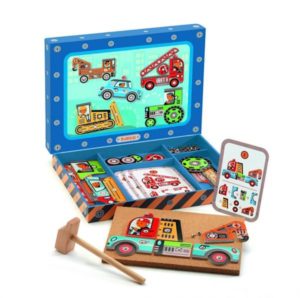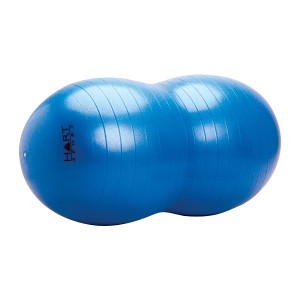WHAT ARE PRE-WRITING SKILLS AND HOW CAN YOU HELP TO DEVELOP THEM AT HOME?
You may have heard your Occupational Therapist refer to pre-writing skills before but what exactly are pre-writing skills and how can you help to develop this important set of skills at home?
Pre-writing skills are the fundamental skills that children need to develop before they are able to write such as holding a pencil, drawing a picture, copying shapes/letters/numbers and colouring in (1).
Pre-writing skills allow a child to be able to effectively hold a pencil and use it confidently and fluently to produce legible writing. If a child cannot effectively complete handwriting tasks it can lead to them feeling frustrated, embarrassed, confused and can have an impact on their self-confidence. Often these children find that they are not able to keep up with the class or that they are not able to read what they have written.
What are the building blocks necessary to develop writing readiness (pre-writing)?
• Hand and finger strength: An ability to exert force against resistance using the hands and fingers that allows the necessary muscle power for controlled movement of the pencil.
• Crossing the mid-line: The ability to cross the imaginary line running from a person’s nose to pelvis that divides the body into left and right sides.
• Pencil grasp: The efficiency of how the pencil is held, allowing age appropriate pencil movement generation.
• Hand eye coordination: The ability to process information received from the eyes to control, guide and direct the hands in the performance of a task such as handwriting.
• Bilateral integration: Using two hands together with one hand leading (e.g. holding and moving the pencil with the dominant hand while the other hand helps by holding the writing paper).
• Upper body strength: The strength and stability provided by the shoulder to allow controlled hand movement for good pencil control.
• Object manipulation: The ability to skilfully manipulate tools (including holding and moving pencils and scissors) and controlled use of everyday tools (such as a toothbrush, hairbrush, cutlery).
• Visual perception: The brain’s ability to interpret and make sense of visual images seen by the eyes, such as letters and numbers.
• Hand dominance: The consistent use of one (usually the same) hand for task performance, which allows refined skills to develop.
• Hand division: Using just the thumb, index and middle finger for manipulation, leaving the fourth and little finger tucked into the palm stabilising the other fingers but not participating.
So how can you help your child to develop these important skills at home?
Building Blocks Therapy has an amazing array of resources available online or at our Time To Shine Clinic in Mernda.
Featuring a great range of affordable games/activities/toys/equipment that can all be used as therapeutic tools to help children develop pre writing and writing skills.
Here are some of my favourite tools and how you can use them at home
Fruit Salad Wooden Threading Beads
Good old lacing activities! There is a reason why these activities have been used for a long time as they work to develop a range of pre-writing and fine motor skills such as bilateral integration, hand eye coordination, pencil grasp, concentration, object manipulation and problem solving.
Construction and building toys are a great way to encourage early development of pre-writing skills in particular fine motor control and dexterity, object manipulation and bilateral integration. This set is recommended for children aged over 3 years but construction activities can be introduced as early as age 1 with simple stacking blocks or even Duplo.
Putty can be used in many different ways – stretching, pulling, squeezing, manipulating, building, pinching – this list goes on. Imagine all of that exercise for tiny little fingers! It’s a great workout and a fun way to develop strength and dexterity in the fingers, wrist and arms. Try our fabulous Discovery Putty and find all the hidden objects! Once you’ve found them all, hide the pieces again for endless fun!
Parents and therapists love these peanut-shaped therapy balls that only roll 2 ways and are easier to control! Peanut balls feature a unique “saddle seat” that easily holds 2 people while providing moderate mobility and extra security/stability. A favourite occupational therapy tool, peanut balls are great for working on balance, body awareness, core strength, body stability, providing vestibular input, and most importantly POSTURE. So many kids who are finding handwriting difficult (and some of those that aren’t) are slumped over the table with their heads down and shoulders pulling forward. Swap the chair for a peanut ball and this will naturally encourage them to sit tall and at the same time it will challenge their core muscles to keep them stable.
For early learners (toddlers and kinder kids)
We try and expose our children to a range of different experiences that allows them to learn about numbers and letters to help develop their number and letter recognition. We have a fabulous range of toys, games and craft activities available that are perfect for parents to provide these experiences for their kids. Some of my favorites include books, blocks with letters and numbers on them, puzzles, stencils and pegs.
If you have any concerns about your child’s handwriting, please talk to your Occupational Therapist at Building Blocks Therapy.
Click here to shop our full range of resources.
Written by Holly Kruse – Occupational Therapist
1. https://childdevelopment.com.au/areas-of-concern/writing/writing-readiness-pre-writing-skills/
2. http://www.ot-mom-learning-activities.com/wrist-extension.html




